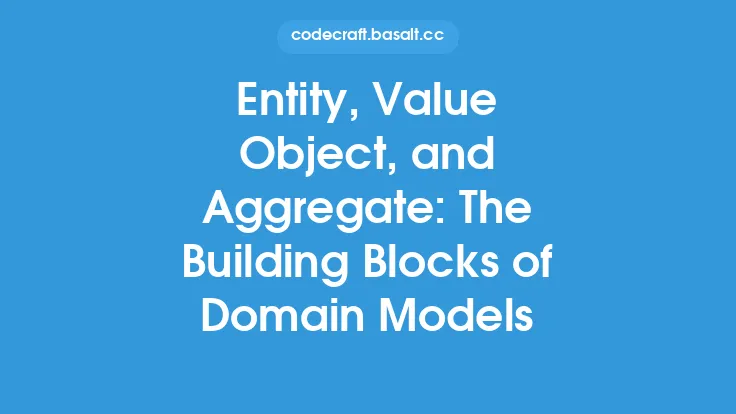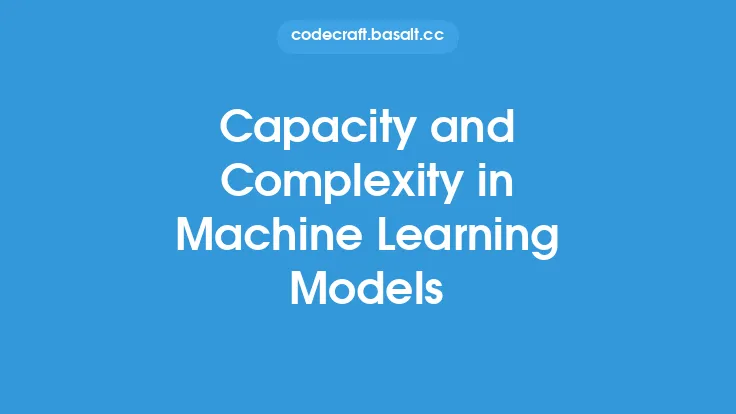When dealing with complex domain models, managing the intricacies of the business domain can become overwhelming. As the domain model grows, so does the complexity of the relationships between entities, value objects, and other domain elements. To mitigate this complexity, two fundamental concepts in domain-driven design (DDD) come into play: aggregates and repositories. These concepts help to organize and structure the domain model, ensuring that the system remains maintainable, scalable, and aligned with the business domain.
Introduction to Aggregates
Aggregates are a cluster of domain objects that are treated as a single unit of work. They define the boundaries of a transaction, ensuring that the integrity of the data is maintained. An aggregate root is the central entity of the aggregate, responsible for maintaining the consistency of the data within the aggregate. The aggregate root is the only object that can be accessed directly from outside the aggregate, and it is responsible for enforcing the business rules and invariants of the aggregate. By defining aggregates, developers can ensure that the domain model is organized in a way that reflects the business domain, and that the system is able to maintain the integrity of the data.
Characteristics of Aggregates
Aggregates have several key characteristics that define their behavior. Firstly, they have a clear boundary, which defines the scope of the aggregate. This boundary is typically defined by the aggregate root, and it determines which objects are included in the aggregate. Secondly, aggregates are responsible for maintaining the consistency of the data within the aggregate. This means that the aggregate root must ensure that the data is valid and consistent, and that any changes to the data are made in a way that maintains the integrity of the aggregate. Finally, aggregates define the transactional boundaries of the system. This means that any changes to the data within the aggregate are made as a single, atomic unit of work, ensuring that the system remains in a consistent state.
Introduction to Repositories
Repositories are another fundamental concept in DDD, and they play a critical role in managing the complexity of the domain model. A repository is an abstraction that encapsulates the data access layer, providing a layer of indirection between the domain model and the data storage. Repositories are responsible for encapsulating the data access logic, and for providing a way to retrieve and store domain objects. By using repositories, developers can decouple the domain model from the data storage, making it easier to change the data storage technology or to switch to a different data storage system.
Characteristics of Repositories
Repositories have several key characteristics that define their behavior. Firstly, they provide a collection-like interface, which allows developers to retrieve and store domain objects. This interface typically includes methods for adding, removing, and updating domain objects, as well as for retrieving collections of domain objects. Secondly, repositories encapsulate the data access logic, providing a layer of indirection between the domain model and the data storage. This makes it easier to change the data storage technology or to switch to a different data storage system. Finally, repositories are responsible for managing the lifecycle of the domain objects, ensuring that they are properly created, updated, and deleted.
Relationship Between Aggregates and Repositories
Aggregates and repositories are closely related, and they work together to manage the complexity of the domain model. Aggregates define the boundaries of a transaction, and they are responsible for maintaining the consistency of the data within the aggregate. Repositories, on the other hand, provide a way to retrieve and store domain objects, and they encapsulate the data access logic. By using aggregates and repositories together, developers can ensure that the system is able to maintain the integrity of the data, and that the domain model is organized in a way that reflects the business domain.
Implementing Aggregates and Repositories
Implementing aggregates and repositories requires a deep understanding of the business domain, as well as a solid grasp of the technical details of the system. When implementing aggregates, developers must identify the aggregate roots, and define the boundaries of the aggregate. They must also ensure that the aggregate root is responsible for maintaining the consistency of the data within the aggregate, and that the aggregate defines the transactional boundaries of the system. When implementing repositories, developers must provide a collection-like interface, and encapsulate the data access logic. They must also ensure that the repository is responsible for managing the lifecycle of the domain objects, and that it provides a way to retrieve and store domain objects.
Benefits of Using Aggregates and Repositories
Using aggregates and repositories provides several benefits, including improved maintainability, scalability, and alignment with the business domain. By organizing the domain model into aggregates, developers can ensure that the system is able to maintain the integrity of the data, and that the domain model is organized in a way that reflects the business domain. By using repositories, developers can decouple the domain model from the data storage, making it easier to change the data storage technology or to switch to a different data storage system. Additionally, aggregates and repositories provide a clear and consistent way to manage the complexity of the domain model, making it easier to understand and maintain the system.
Best Practices for Using Aggregates and Repositories
When using aggregates and repositories, there are several best practices to keep in mind. Firstly, aggregates should be defined based on the business domain, and should reflect the way that the business operates. Secondly, repositories should be designed to encapsulate the data access logic, and should provide a clear and consistent way to retrieve and store domain objects. Thirdly, aggregates and repositories should be used together to manage the complexity of the domain model, and to ensure that the system is able to maintain the integrity of the data. Finally, developers should be careful to avoid over-engineering the system, and should focus on providing a simple and consistent way to manage the complexity of the domain model.
Conclusion
In conclusion, aggregates and repositories are two fundamental concepts in domain-driven design that help to manage the complexity of the domain model. By organizing the domain model into aggregates, developers can ensure that the system is able to maintain the integrity of the data, and that the domain model is organized in a way that reflects the business domain. By using repositories, developers can decouple the domain model from the data storage, making it easier to change the data storage technology or to switch to a different data storage system. By following best practices and using aggregates and repositories together, developers can create a system that is maintainable, scalable, and aligned with the business domain.





